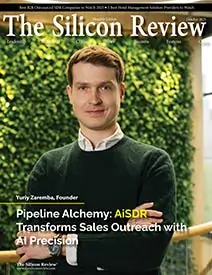>>
Industry>>
Food and beverages>>
Beyond Meat Unveils 3D-Printed...Beyond Meat Unveils 3D-Printed Lab-Grown Steak, Reshaping U.S. Food Supply
The Silicon Review
02 April, 2025
Beyond Meat's latest breakthrough—3D-printed lab-grown steak with real marbling—signals a major shift in food technology, poised to disrupt the U.S. restaurant industry by Q2 2025.
Beyond Meat has unveiled its most advanced product yet: a 3D-printed, lab-grown steak that mimics traditional beef with real marbling. This innovation, set to debut in select U.S. restaurants by Q2 2025, pushes the boundaries of alternative protein technology and raises critical questions about the future of food production, sustainability, and supply chain automation. Unlike previous plant-based alternatives, this steak incorporates precision bioengineering and additive manufacturing to recreate the texture, taste, and structure of conventional beef. By using a combination of plant-derived proteins and lab-cultivated fat cells, Beyond Meat has achieved a level of realism previously unattainable in meat substitutes. The use of 3D printing ensures consistency and scalability, allowing for efficient mass production without the environmental impact of traditional livestock farming.
This breakthrough arrives at a crucial time for the food and beverage industry, where rising meat prices, climate concerns, and consumer demand for sustainable options are reshaping market dynamics. If Beyond Meat’s lab-grown steak gains traction, restaurant chains and food service providers may need to adapt, rethinking sourcing strategies and kitchen operations to integrate this next-generation protein. However, widespread adoption faces hurdles, including regulatory approvals, pricing competitiveness, and consumer perception. While lab-grown meat has made strides in acceptance, questions surrounding labeling, long-term health impacts and market positioning remain.
Beyond Meat’s latest move solidifies its position at the forefront of food innovation. If successful, this technology could redefine industrial food production, transforming not only how meat is made but also how the industry adapts to automation and sustainable sourcing in the years ahead.


_2025-11-17_06-38-14.webp)

 (1)_2025-10-21_13-35-14.webp)

_2025-10-02_10-21-48.webp)